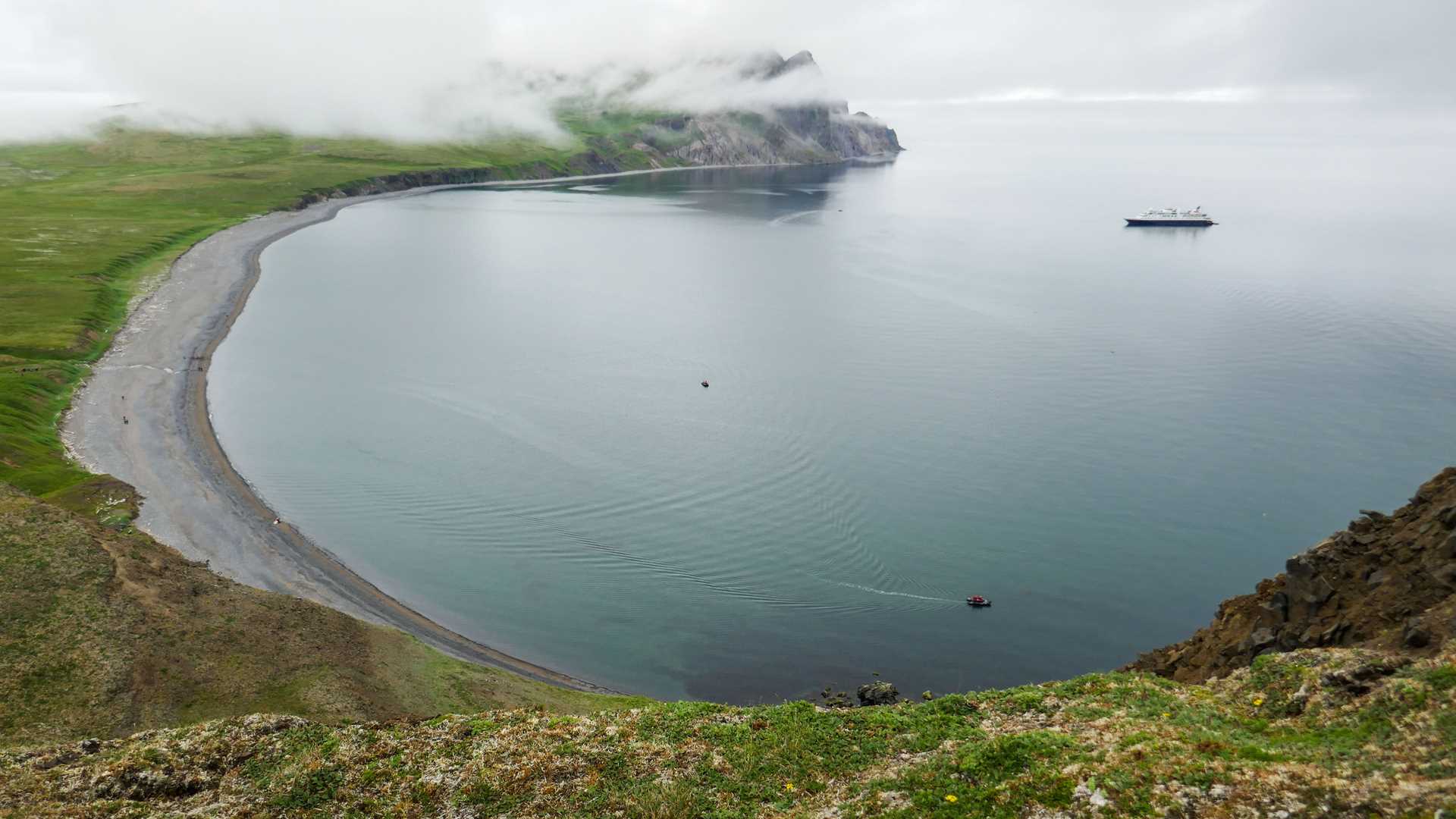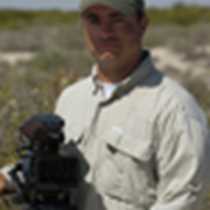Today National Geographic Orion made its way across glassy waters to Saint Matthew, the most remote island in the Bering Sea. Approaching Hall Island off the northern tip of St Matthew, the conditions while foggy were the some of the calmest our Bering Sea has ever seen. Murres, fulmars, and auklets bounced across glassy water and welcomed us to their remote domain. The islands of Hall and St Matthew support over a million colonial-nesting sea birds, as well as ground-nesting bird species, including the endemic McKay’s bunting (Plectrophenax hyperboreus) and a major portion of the total breeding population of Pribilof rock sandpipers. Thanks to the attention given to the island during the Harriman Expedition in 1899, Teddy Roosevelt included St. Matthew in a group of islands designated as America’s first wildlife refuges in 1909. Today this area is a part of the much larger Alaska Maritime National Wildlife Refuge.
After lunch we landed south of Glory of Russia Cape. Upon landing on the beach, Pribilof Rock sandpipers lured us into the wet tundra and we were excited to have our boots on the ground for a leg stretch. Evidence of endemic singing voles (Microtus abbreviates) was everywhere in the form of burrows and tunnels. Living in small colonies this species of meadow vole feeds on horsetail, sedges, willow leaves, twigs, etc. Active throughout the winter, they cache tubers underground for winter consumption and dig short burrows with tunnels leading to nesting and food storage chambers. Prolific breeders they come to sexual maturity between four and six weeks of age and can have as many as five litters (between two and twelve young per litter) each year! Life is short for this species as they live for only up to eight months.
On top the ridge we found reindeer antlers buried deep in moss which helped to tell the story of their introduction in 1944 when 29 reindeer were brought here to provide an alternative food source for the men stationed at the weather and Loran station during WWII. When the war ended and the men left, hunting of the species had ceased, and by 1963 their population grew to 6,000. Reaching their carrying capacity, they quickly depleted the lichens, their primary winter forage, and a harsh winter in 1963 took its toll on the population, leaving 40 emaciated females and one infertile young male. Over the next few years the reindeer perished, and by the mid-80s there were none. The view from the top of the ridge down to the landing on Bull Seal Beach was absolutely amazing, as was our view of parakeet auklets, fulmars, and puffins.
An incredible day in one of Alaska’s remotest regions!









